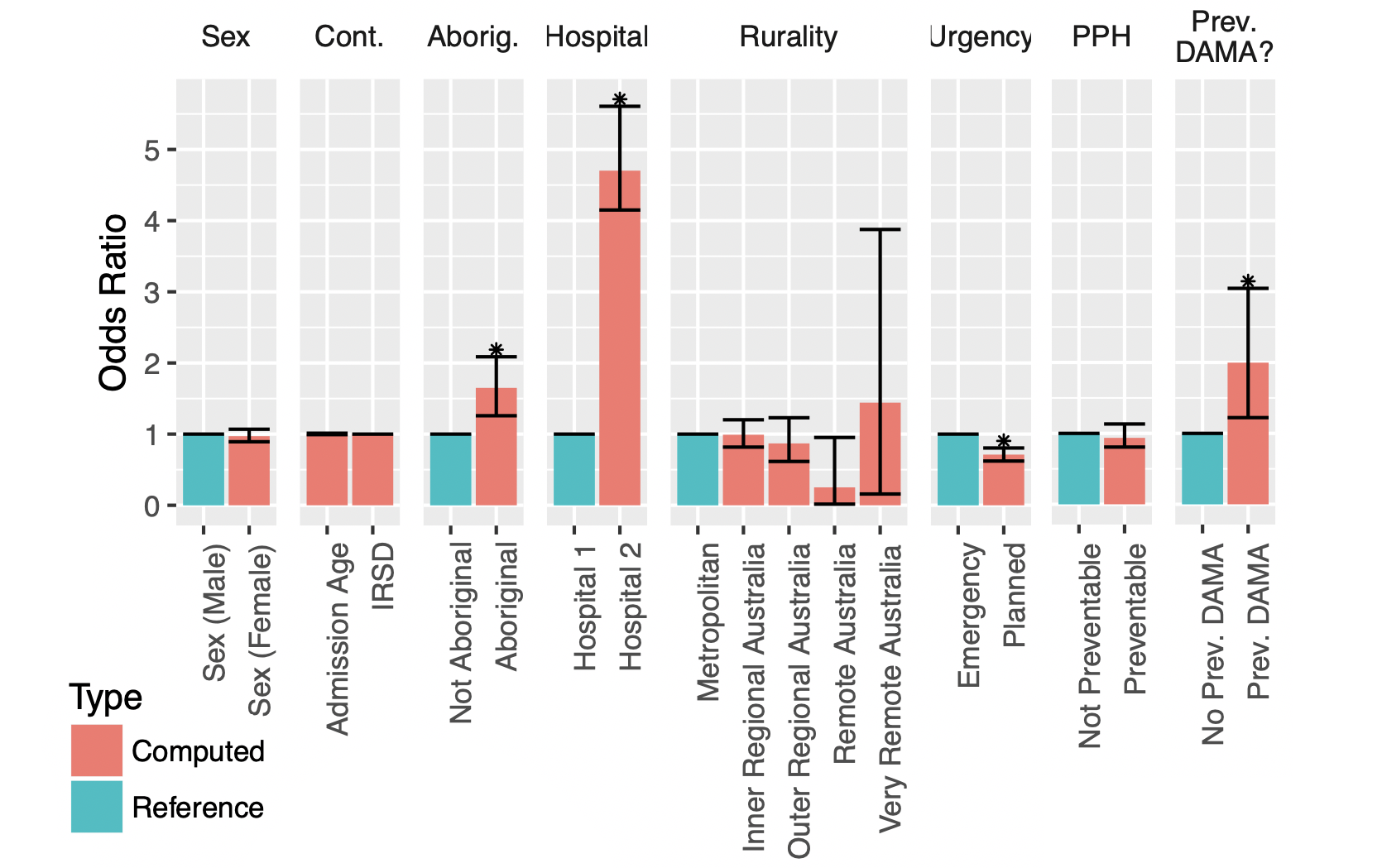 Odds ratios of Discharge against medical advice with various characteristics.
Odds ratios of Discharge against medical advice with various characteristics.Predictors of Discharge Against Medical Advice in a Tertiary Paediatric Hospital
Abstract
Background: Patients who discharge against medical advice (DAMA) from hospital carry a significant risk of readmission and have increased rates of morbidity and mortality. We sought to identify the demographic and clinical characteristics of DAMA patients from a tertiary paediatric hospital.
Methods: Data were extracted retrospectively from electronic medical records for all inpatient admissions over a 5-year period. Demographic characteristics (age, sex, Aboriginality, socioeconomic status and remoteness of residence) and clinical characteristics (admitting hospital site, level of urgency on admission, diagnosis and previous DAMA) were extracted and logistic regression models were used to identify predictors of DAMA with 95% confidence intervals.
Results: There were 246,359 admissions for 124,757 patients, of which 1871 (0.8%) admissions and 1730 patients (1.4%) DAMA. Predictors of DAMA in a given admission were hospital site (OR 4.8, CI 4.2–5.7, p < 0.01), a mental health/behavioural diagnosis (OR 3.3, CI 2.2–4.8, p < 0.01), Aboriginality (OR 1.6, CI 1.3–2.1, p < 0.01), emergency rather than elective admissions (OR 0.7ha, CI 0.6–0.8, p < 0.01), a gastrointestinal diagnosis (OR 1.5, CI 1.1–2.0, p = 0.04) and a history of previous DAMA (OR 2.0, CI 1.2–3.2, p = 0.05).
Conclusions: There are clear predictors of DAMA in this tertiary hospital admission cohort and identification of these provides opportunities for intervention at a practice and policy level in order to prevent adverse outcomes.